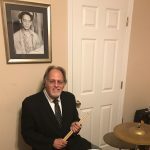Jeff Barnhart: Hal, as you recall, we omitted one recording in our discussion of the New Orleans Owls (TST, March-April 2023) to work out a mystery: how an obscure tune, “Goose Pimples,” was recorded by three different bands in three different studios for (at least) three different labels on three consecutive days in October 1927! There’s definitely a story here. We agreed to look closely at all three versions of this great tune and invite our great friend, terrific musician, and Bix scholar Andy Schumm to join the party!
Jo Trent and Fletcher Henderson receive co-composer credit for “Goose Pimples” —although some scholars believe this tune might have been included in the stack of compositions Fats Waller legendarily sold Henderson to help pay for a meal. They submitted the tune for copyright on July 12, 1927 (thank you David Sager for confirming this date). Henderson’s Dixie Stompers recorded the tune in NYC on October 24, 1927. Bix and his Gang recorded their completely different version on October 25, 1927 (again in NYC). The New Orleans Owls recorded theirs the day after in New Orleans. There are enough similarities between the takes that each group had to be referencing a stock arrangement; Henderson beat out the other two groups in recording his own tune (or if it was indeed by Waller, his own arrangement) by a mere two days!
Once we established there had to have been an extant stock arrangement to play off of—or as we’ll see with Bix and the Gang, mostly ignore—it followed we had to have access to it. Who else could I call but Vince Giordano, who graciously shared the piano part (which in a stock contains most of the important melodic and rhythmic bits played by the horns) for “Goose Pimples.” Vince considers this to be the “Holy Grail” of stock arrangements, averring it took him 45 years to find! Among other reasons, he points out the difficult key of Db as being an unfriendly key to navigate, even for polished groups. It was his generously sharing the piano part of the stock that is enabling us to start listening and dissecting, so THANK YOU, Vince!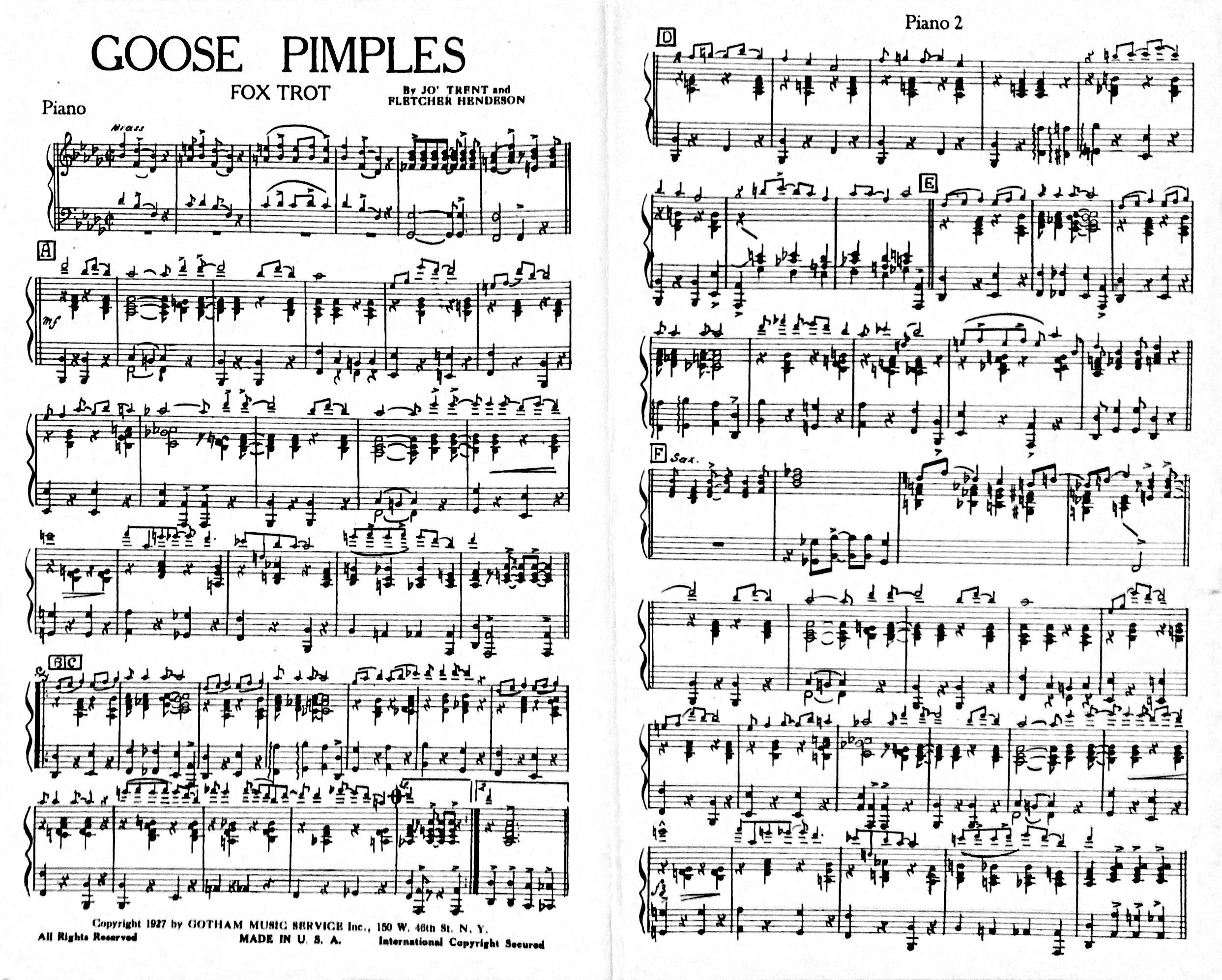
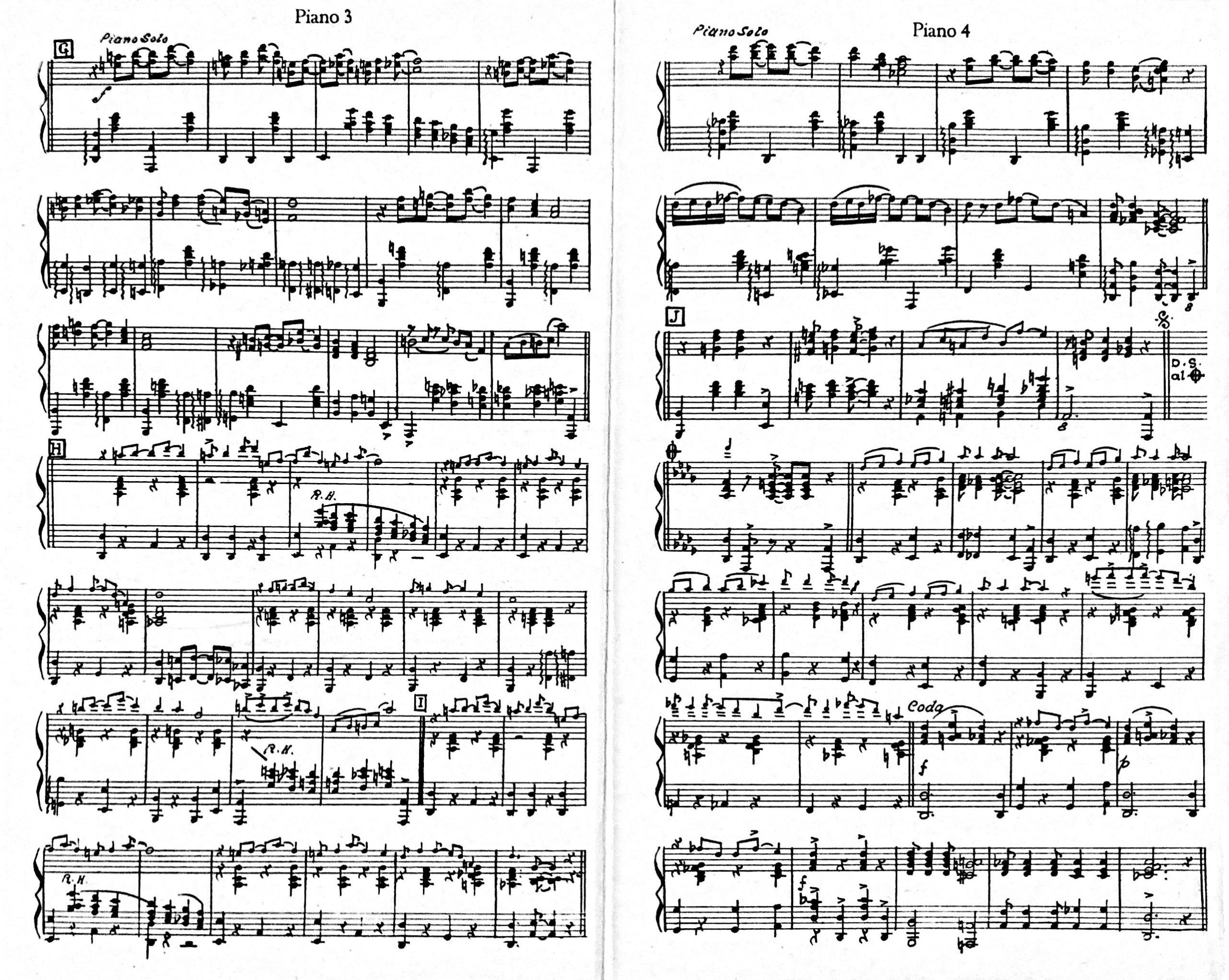
Click here to open the sheet music as a separate page.
Hal, let’s ask our guest for anything he’d like to share regarding stocks. Over to you, Andy!
Andy Schumm: Thanks for including me in the discussion! I love how differently these three bands treat a stock arrangement. Before we get into the music, maybe I can shed some light on how bands used to use stocks. Music stores offered these arrangements so that bands could get a tune on the bandstand immediately. In my experience as an arranger, a good rule of thumb is that it takes approximately eight hours of work to create three minutes of music. If you need ten new songs by the weekend, it just can’t be done in time. The arrangers of these stock arrangements had versatility in mind. They’re typically written for ten musicians, but if you had just six, you could more-or-less use them without alteration. Also, they’re typically “overwritten” where all the horns are basically playing non-stop.
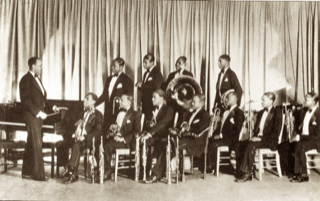
Something to keep in mind throughout this discussion is that both Henderson’s band and the Owls were regularly working bands. Bix’s group was created just for the studio. A band working every night can learn the arrangement inside and out, while a studio group might be approaching the material from a fresh perspective. Additionally, while jam packed with hot solos, both Henderson and the Owls are dance bands at their core. As we’ll see, Bix’s record is jazz through and through.
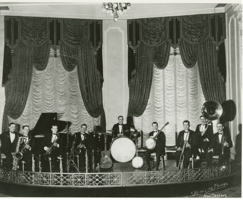
JB: Good things to remember, Andy! A brief description of the roadmap for the stock of “Goose Pimples” should serve to help readers navigate the recordings, each of which has some level of variation from the printed page. In the printed arrangement, a six-bar intro gives way to a 16-bar verse starting in Bbm and ending in Db (letter A on the music). If we view letters B-E as comprising a 40-bar chorus in Db, both B and C are 12-bar blues changes, followed by an eight-bar “bridge” (D) taking us to the melody and changes of the first and last 4 bars (middle 4 removed) of the blues chorus (E) to round out the main theme. Twenty-bar letter F contains a four-bar interlude and a repeat of the verse. Letter G is a 16-bar theme for written-out piano solo; letter H is an ensemble repeat of that theme. Letter I starts as another ensemble ride on that theme but bars 9-16 revert to piano (in another written solo). Letter J is a 4-bar interlude back to two ensemble blues choruses (see B and C) ending with a rhythmic 8-bar coda with contrasting dynamics and a dance show ending. We’ll utilize this roadmap as an aid to illuminate the details of each recording.
My fellow syncopated sleuthers, let’s begin with Fletcher Henderson’s Dixie Stompers! Hal, why don’t you start?
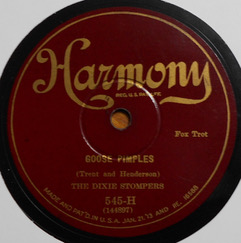
Hal Smith: Jeff, you can include me in the group that believes “Goose Pimples” was originally composed by Mr. Thomas Waller. (I definitely hear some similarities to Fats’ “I’m More Than Satisfied” on letter G)! Hopefully the hamburgers Fats received in trade for the song were the best he ever ate!
Fletcher Henderson’s version of “Goose Pimples” was recorded by the Dixie Stompers—a small unit taken from the Henderson Orchestra—and the record was issued on Columbia’s (budget) Harmony label, then on Velvet Tone and Diva.
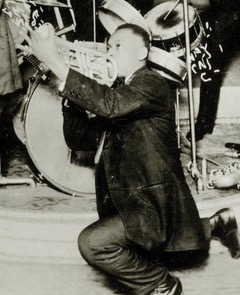
Right away, on the introduction, the first thing we hear is the very bright tempo (especially compared to Bix’s record). Trumpeter Tommy Ladnier is on fire on letter A. The reeds play letter B, with a repeat (letter C) by Jimmy Harrison on trombone. A clarinet trio plays letter D, followed by solo piano at letter E and alto sax by Jerome Don Pasquall. The reed section is heard at the beginning of letter F, then tenor saxophonist Coleman Hawkins comes roaring in to finish the section. Henderson plays letter G as a piano solo and trades with the full orchestra on letter H.
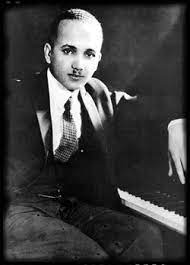
By the way…note all the Waller-isms in Henderson’s playing on letter H! (Another argument for this being a Waller composition?) Following the interlude at letter J there is a volcanic chorus by Hawkins, an extended stoptime for Ladnier (muted), a Bix-like flare, a red-hot final ensemble that teeters on the edge of chaos and one of Henderson’s patented cool-the-temperature-down codas. Even though it barely resembles the Bix recording, this is a fantastic performance—thanks mainly to Ladnier, Hawkins and Henderson himself. Guys, what do you all hear on this one?
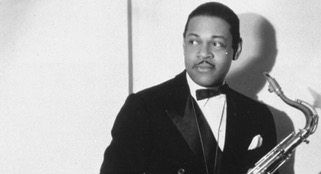
JB: Man, alive! This thing races along at 252 bpm and never lets up! At this tempo, the band adds extra blues choruses for Hawk and Ladnier before the final climatic ensemble and those solos are the highlights for me, along with Henderson’s intricate passing harmonies underneath Jimmy Harrison’s trombone chorus earlier in the take. [N.B. Smack’s constantly shifting harmonies were a favorite device of the stride pianists and are NOT in the printed music!] As far as his piano solo, he plays letter G pretty much as written but loosens up a bit during his 8-bar solo on I which leads us to the interlude at J and one can hear (and see in the arrangement) an abundance of Wallerisms. Regarding the coda, Henderson completely abandons the stock for a very effective ending; I love those horn flares backing Ladnier, intended no doubt to raise the namesakes of this tune in listeners’ ears and dancers’ feet! With a length of 2:59, purchasers got more than their money’s worth on this one!
AS: The better bands, such as our three today, “doctored” stocks to make them more interesting. A great example of this is what Hal pointed out at letter B of Henderson’s version. The repeat is taken by Jimmy Harrison instead of the saxes. I can guarantee that the saxes were “supposed” to play there, but an easy alteration was throwing it to the trombone. Another example is the final chorus where some of the musicians are reading their parts, and others are just improvising. The result is Fletcher Henderson’s Orchestra at its best.
JB: For sure! Hal, you started this whole thing by suggesting our two-parter on the New Orleans Owls, so could you please lead the discussion of their recording from October 26, 1927 (as Bix and the Gang’s ride is so different, I thought we’d go out of chronological order)?
HS: I really love the tempo and the rhythm feel on the Owls record for Columbia. It’s about 215 beats per minute and the band just glides through the piece. The dancers at the Grunewald Hotel must have been grinning ear-to-ear when this one was kicked off. The brass bass has such a big, full, mellow sound that it almost made me think that I was hearing a bowed string bass. Also, listen to the singing tone of the cornet. It’s plenty hot, but there is a wistful, lyrical sound going on at the same time. Earl Crumb’s choke cymbal and cymbal crashes are just wonderful. Notice he lets the cymbal ring to emphasize the whole note on the 12th bar of letter A.
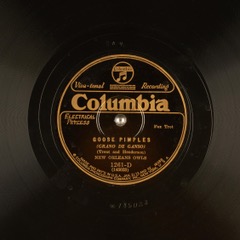
Even though the Owls followed the arrangement, they still added some characteristic touches— such as the single-string guitar solo instead of reed trio at letter D. Although there is only a brief piano solo at letter I, it is enough to let us know that the influence of Signorelli (and Waller?) was present in New Orleans in 1927. Unless I’m mistaken, the Owls played the coda pretty much the way it was written—as opposed to how it was interpreted by Fletcher Henderson and Bix.
There’s a lot to discuss here! What are your thoughts, Gents?
JB: After the almost frenetic (but precisely rendered) interpretation by the Dixie Stompers, the Owls offer us a bit of the Crescent City and “take their time.” This more moderate tempo draws us to the beauty of both the verse and chorus melodies as the band plays both sweet and hot. Hearing the brass bass you mentioned reminded me there was NO bass on the Dixie Stomper’s version, but Henderson’s piano playing was so strong, I hadn’t missed it until now. That 8-bar interlude at D gets changed around from version to version as well. I like this one best with the guitar (which makes sense considering the NOO’s growing out of the Invincibles string band). Someone in the band must have arranged the brass trio (and then reed trio) assaying of letter G, written in the stock as a piano solo, and it sounds terrific.
One interesting side note is that the NOO removes 16 bars (the final half of letter H and the first half of letter I) from their version, as did the Dixie Stompers on theirs, meaning there had to have been a rewrite sometime between the July stock Vince provided us and the one being used by October, 1927. However, the band does render the coda as written, which is great as it is a nifty piece of writing. For those who read music, the bass note on the 5th bar of the coda is printed as a Db, but tubist Dan LeBlanc changes that to a Cb to go down to the half note Bb in the next bar; I’m wondering if the stock piano part has a typo? Over to you, Andy!
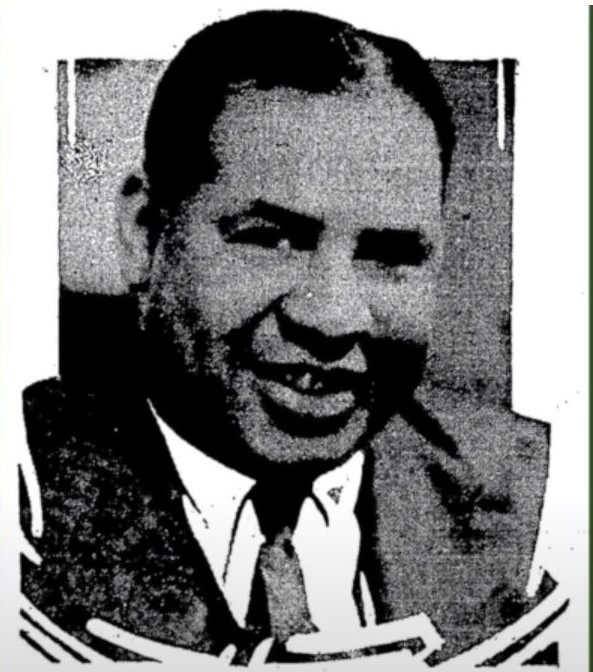
AS: I can’t say enough good things about this band. I think the more relaxed tempo gives us a clearer picture of what the stock arrangement actually sounded like. As both Hal and Jeff have pointed out, the Owls did make some major alterations to the chart. After listening to both Henderson and this record, I’m absolutely blown away at the high quality of this arrangement. In my experience, most stocks aren’t anywhere near this good. Why didn’t other bands record it?
When I first heard this record, I wondered how the Owls got a hold of Henderson’s chart. There are a couple passages that accidentally (or intentionally?) sound like Henderson’s band. For example, take a listen to the low saxophone reply to the brass on the verse. This kind of figure reminds me of other Henderson titles from the same time period, such as “Variety Stomp” and “Hop Off.” Also, I direct your attention to the coda. This ending just screams Henderson to me, and it’s quite unusual for the Owls. It’s the ending included in the stock arrangement, but more importantly, it’s nearly identical to the ending of Henderon’s “D Natural Blues.” While the record states that Henderson himself wrote “D Natural Blues,” I’m starting to think that maybe Fats Waller had a hand in both that recording and “Goose Pimples.” The plot thickens. (As a side note, Jean Goldkette historian Josh Duffee tells me that Bill Challis made his own arrangement of “D Natural Blues” for the Goldkette Band. What did that sound like?)
JB: We move now to the most individual interpretation of “Goose Pimples,” recorded on October 25, 1927, by Bix Beiderbecke and his Gang at the Okeh studios in NYC, but released by the Okeh company on their “race” record label as being recorded by the fictitious New Orleans Lucky Seven. This recording deviates so greatly from the stock arrangement (excepting the bulk of Signorelli’s solo at letter G), that there is little to go on looking at the piano part of the stock. We’re turning to Andy Schumm to lead us in navigating this, one of Bix’s most notorious records:
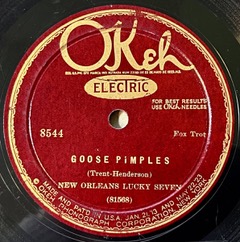
AS: I’ve wanted to write about this record for years. It has to be one of the most analyzed records of all time. There are so many unusual and exciting figures on this record that I’d like to take you through it step by step and make my case for what actually happened. Here we go!
Everything about this record is stripped down; all that Bix leaves intact is the melody and chords. Gone are the intricate brass and saxophone figures in the published chart. Since the band deviates from the stock arrangement so much, I’d like to take you through the performance using timestamps. Right from the beginning, we notice just how relaxed this tempo is compared to our previous examples. This is a Jazz Band. Only the first four measures of the intro are derived from the stock. Already by 0:02, Bix has radically changed the printed arrangement and come up with something brand new to get us to the verse.
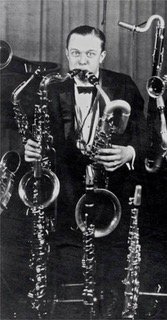
Bix’s lead on the verse is typical of his 1927 sound. Strong and sure-footed. If I was a sideman playing with Bix, I would have no trouble knowing what’s coming next. This is where it gets interesting; clarinetist Don Murray takes over at 0:34 with an A section. The form of the chorus has two A sections followed by the B section. For some reason, Bix decided to insert an extra A section to feature Don on the clarinet before the whole band joins in at 0:51. (As an arranger, this is highly unusual. I’ve never seen it anywhere else.)
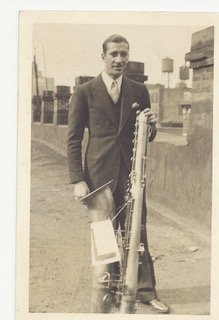
Bix leads solidly for the next 12 bars until 1:07. Then the wheels fall off. And I mean they really fall off. By inserting that extra clarinet A section before the ensemble, Bix has confused himself and he thinks the B section is coming next! Notice how at the end of this A section, he plays as if he’s done and it’s time for the trombone. Realizing his mistake, he quickly tries to recover and barely makes it. He doesn’t play any of the printed melody. Listen for the gap in cornet lead at 1:08. It may seem trivial, but it tells the whole story. Bix screwed up this take and from here on out is just going through the motions. As Bix fans, we’re fortunate that we get to hear Bix at his most relaxed. From his perspective, this record is ruined and he’s going to have to do another take. I’ll prove it.
Bix has a tell-tale sign of frustration and anger at his own playing. Once you hear it, you can’t unhear it. Towards the end of his career when his lip was not as strong as it once was, you can hear him play this figure over and over again as a sign of self-flagellation. In our specific case, Bix plays a flare at 1:18. To us, it’s exciting as hell, but to Bix, he’s announcing that he’s done and giving up.
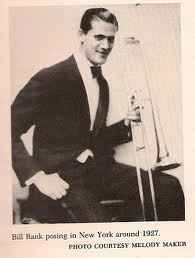
Bill Rank comes to the rescue at 1:25 with a solid trombone bridge. Bix is back at the helm at 1:36, but if you listen closely, he’s just phoning it in with something to plug the gap. Now we get to the infamous part.
At 1:48, Bix dribbles into Frank Signorelli’s piano solo. Again, I’ve never heard anything like this on any other record. It makes no sense unless you understand that Bix is just fooling around on the horn, waiting for this take to end. At 2:03, Bix plays a Charleston rhythm to match Frank’s piano solo. How does he know to do this? Is Bix a mind reader?
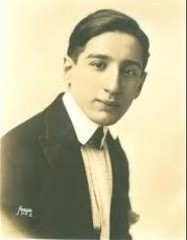
No. Let’s unravel this one. It turns out that Frank Signorelli attempted to make a piano solo record of “Goose Pimples” for Brunswick on June 22, 1927! Unfortunately, this record was rejected, and we’ve never found a test pressing of it. What’s intriguing is that this solo version was made a full four months before any of the recordings we’ve discussed. How did this come about? How did Signorelli know this song if it wasn’t published yet? There are many mysteries to solve, but for our purposes, it’s logical that Frank had an entire solo performance worked out ahead of time.
I would also assert that Signorelli might have been the reason that “Goose Pimples” was chosen as material for the Gang record. He wanted to get part of his solo documented on record. The solo he plays is clearly worked out ahead of time, and Bix just knows where that Charleston rhythm will happen. Simple as that. Bix is continuing to not care about this take. One additional note: Listen very carefully around 2:06. What’s that noise? It sounds like someone stamping his foot. (I might have listened to this record too many times.)
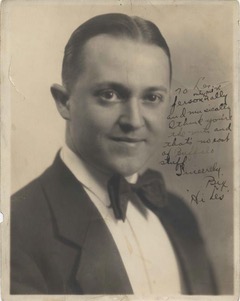
The band comes back in at 2:09 with an interlude, and then Bix takes one of the laziest solos I’ve ever heard him take 2:15. He’s basically just playing the melody, in effect telling himself, “Get it right this time.” At 2:32, it’s time for two more A sections of ensemble. Keep in mind that Bix is mad at himself for blowing this take, and it’s about to show.
Bix keeps a lid on it for the next 10 measures or so, but at 2:47, he tears the cover off. As a cornet player, I’ve done this myself. “Let’s get out of here!” Bix uncharacteristically plays an extremely sharp concert A-flat repeatedly, and intentionally so. It’s a reprise of his “anger flare” at 1:18. If you’ve heard this record 25,000 times like me, try to listen to this last chorus with new ears. Yes, it’s hot. But Leon Bix Beiderbecke is pissed off. Bix’s solo coda at 3:10 is also notable. For those non-cornetists out there, this is an extremely lazy break. Six notes: the first three are fingered open, and the second three are fingered with just the second valve. Try to imagine Bix playing something like his immortal solo ending on “I’m Coming Virginia.” That’s what belongs here on “Goose Pimples,” but Bix has thrown in the towel. And I love him for it.
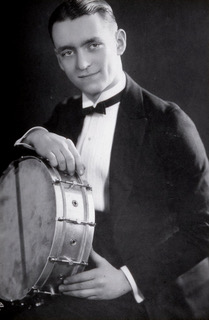
I’m sorry (actually not at all) for going on so long about this performance, but it’s a rare glimpse of Bix the Human in his prime. He’s not infallible, but the way he recovers from a mistake we can barely notice is evidence of his natural genius. Next time you screw up the form, let’s see if what results is at the level of this transcendental masterpiece. I have my doubts. Bix Beiderbecke is from a different planet.
JB: The same could be said about YOU, Andy! Fantastic comments!
HS: I’ve been waiting about 40 years to read that analysis of “Goose Pimples.” If there was a Pulitzer Prize for writing about Classic Jazz—you would be the clear winner.
JB: Andy, thanks so much; we’ll be calling on you again! Hal, see you next month!
Jeff Barnhart is an internationally renowned pianist, vocalist, arranger, bandleader, recording artist, ASCAP composer, educator and entertainer. Visit him online atwww.jeffbarnhart.com. Email: Mysticrag@aol.com
Hal Smith is an Arkansas-based drummer and writer. He leads the El Dorado Jazz Band and the
Mortonia Seven and works with a variety of jazz and swing bands. Visit him online at
halsmithmusic.com
Andy Schumm is a multi-instrumentalist, recording artist on Rivermont Records, and leader of the Chicago Cellar Boys. Find the Cellar Boys online at www.chicagocellarboys.com.






